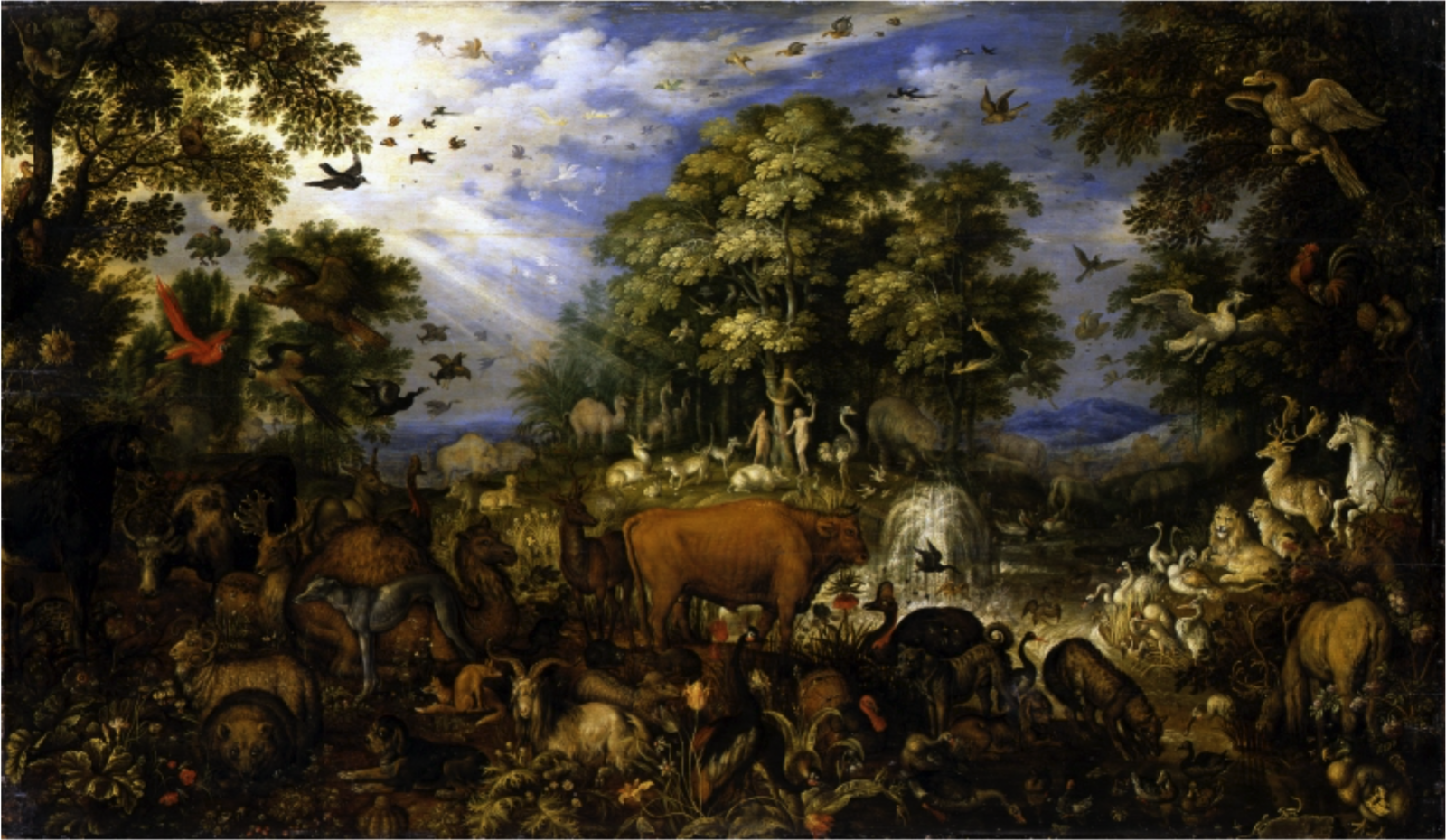Artists, Field Notes, Painting, Plants
Mushrooms in Paradise
Roelant Savery’s The Paradise in the Gemäldegalerie of the Staatliche Museen zu Berlin (Berlin State Museums) is an astonishing example of a subgenre of mannerist landscape painting. Not only that: it includes one of the first historically known depictions of fungi in European art.
30.12.2020

The Paradise in the Gemäldegalerie of the Staatliche Museen zu Berlin (Berlin State Museums) is an astonishing example of a subgenre of mannerist landscape painting pioneered by Roelant Savery (1576–1639) in the early 17th century. Depicting the prelapsarian paradise—with the original sin unfolding in the background at the centre of the composition—the painting is positively teeming with life, providing a scopophilic feast of biodiversity.
The painting, which was a wedding present to princess Amalia of Solms-Braunfels (1602–1675), is signed and dated by Savery to the year 1626. The genre it represents, of which the Gemäldegalerie posesses one of the earliest known examples (cat. 717A), originated during Savery’s stay in Prague, at the court of the Holy Roman Emperor Rudolf II. As his catholic taste for collecting naturalia and aritificialia was truly insatiable, his collections provided the artist with abundant study material. Especially striking for today’s onlookers is the inclusion in the painting of a dodo (below on the right), a species of flightless bird now extinct, which had been imported by Dutch sailors at the end of the 16th century. From the surviving inventories, we know that the emperor possessed a stuffed specimen and perhaps even a living specimen of this bird.
Equally remarkable is the presence of a cluster of mushrooms, just beneath the snout of the bear (below on the left). Depictions of mushrooms are seldom found in the works of this period; we only know of a single other example of “mushrooms in Paradise” before Savery. After all, neither the Bible nor the Apocrypha make any references to mushrooms; in the story of Genesis, one may even read a conscious exclusion of mushrooms from the realm of living creatures in the assertion that God created only seed-bearing plants.
Mushrooms transgressed this divine prescription, and were therefore often considered an abomination of nature. Their sudden appearance and decay, their association with poison, and their apparent lack of a structure made them especially suspicious. Were they part of God’s plan, or were they sent on earth as a punishment, just like the thorns and thistles mentioned in Genesis 3:18?
Roelant Savery’s The Paradise, however, seems to optimistically include mushrooms in its cornucopic display of biodiversity, as a pictorial hymn to the richness and variety of God’s creation. Like coeval herbals—one of the most popular genres for early printed books—the painting departs from, and expands on, biblical and ancient descriptions of plants and animals. It is a silent witness of a transitional period towards a more inclusive view of nature.
Today’s conception of biodiversity has turned entirely on its head since Savery’s time. Biologists nowadays consider the stars in The Paradise as little more than an evolutionary afterthought. Today, we know for a fact that, by many orders of magnitude, most of the earth’s biodiversity is incapsulated in microscopic beings, and that fungi easily outnumber both plants and vertebrate animals in the count of global species.
